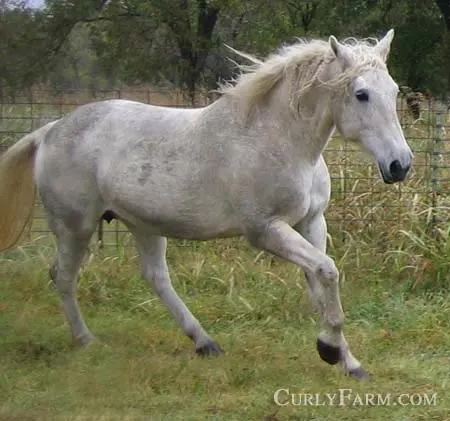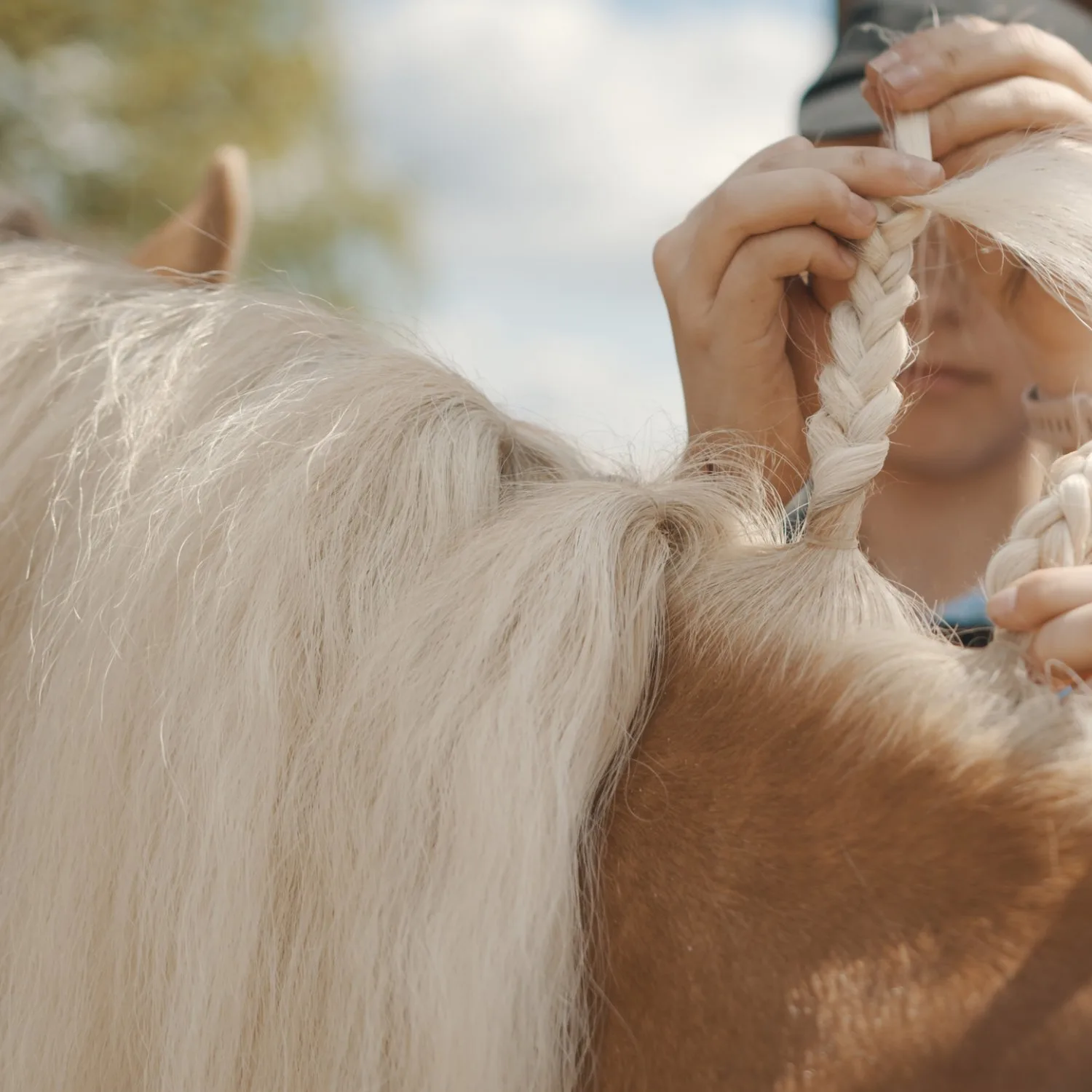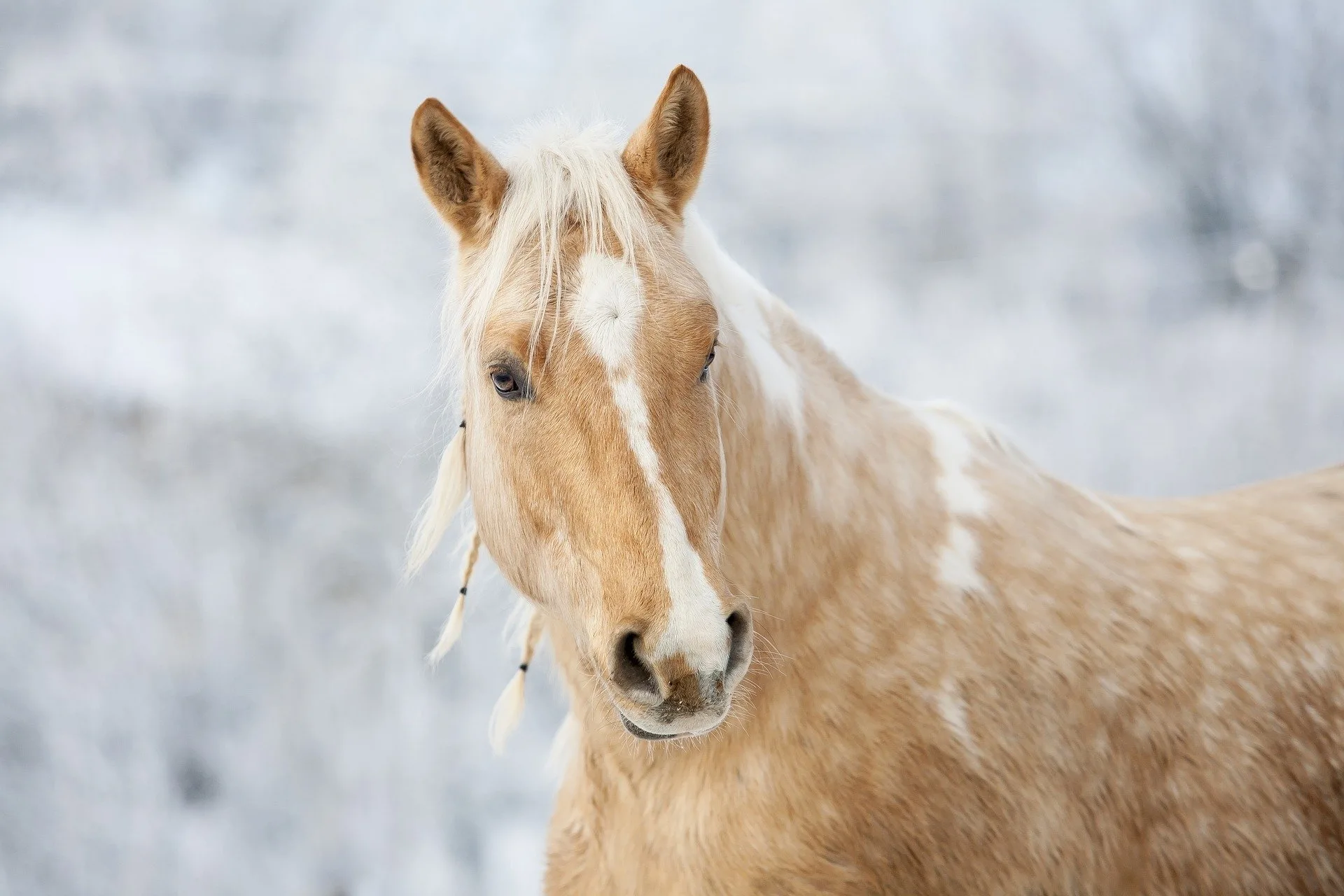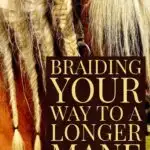Braiding Manes for Hair Growth
Outside of the slight blood flow stimulation during grooming, braiding manes probably doesn’t make a significant difference in how fast hair grows, but what braiding can do is prevent hair loss from snags and tangles. There are several reasons to leave a mane braided in a special braid that’s perfect for turnout:
1. For a horse with a long mane, detangling can be a regular headache. With braids left in, the job of detangling manes is kept to a minimum, and you’ll be able to avoid having to roach the mane completely to control unmanagable hairs.
2. Braids = No Snags. During turnout, manes regularly catch on tree branches and fences, with manes left in smooth braids instead of frizzy tangles, this problem is minimized.
3. Braids help protect a mane while it is growing out.
Pasture braids, demonstrated below, should be left loose at the top, where the roots of the hair connect to the neck, in order to prevent horses from itching to relieve discomfort. Towards the bottom of the braid, the plaits should be tighter so sticks and debris can’t get caught.

In the below photo of a mare turned out to graze, you can see how these braids look after being left in for several weeks- the braids will gradually come out and need rebraiding. This type of straight braid doesn’t pull on the hair like traditional show braids, and so can be left in for weeks at a time.

Mane Braiding Hints & Hacks
Young or old, most horse owners get a kick out of braiding manes and tails from time to time. Whether you are braiding for show, for fun, or as a way to keep necks cool and long manes tidy, it can be helpful to know a few braiding tricks. At LearningHorses.com we’ve written on running braids, pasture braids, Dutch braids, and 4-plait braids, but there are dozens more braids to experiment with. One of the best resources we’ve found for eye-turning mane braiding styles is actually instruction books for braiding human hair!

Our favorite resource, “Twist Me Pretty” has step by step instructions for 45 braiding styles, many of which can be transformed into even more dramatic looks by completing the braid with a 4-plait braid instead of a standard 3 strand braid.
The following section may contain affiliate links. As an Amazon Associate, we earn from qualifying purchases.
Picking up the 4 strand braid can be a challenge at first, but we’ve found this braiding tool– designed to hold four strands, to be the perfect aid to make the learning curve much easier!
The four-strand braid isn’t particularly practical, especially for these pasture braids that aren’t designed to be seen, but it’s a fun skill to have and once you’ve got a four-strand braid technique down pat, you can integrate that style of braid into traditional horse show mane braids

How to Brain Pasture Braids into a Horse Mane
Time required: 15 minutes
Divide Mane into Sections

Begin with approximately 3 one-inch sections of hair (varies by mane thickness). Loosely braid the strands over each other several times. Do not pull the hair tight! A tight braid will irritate and potentially pull hairs out when the horse stretches their neck.
Pull Braid tighter

As you braid, begin tightening your braid after about 2-3 inches from the roots. As shown in the image below, braid more snugly at the bottom. This allows lots of comfort for the horse but keeps the braids in place.
Continue Braiding until Hair Thins

Continue braiding until the mane starts to naturally thin. Then, place a braiding band around the braid. If you want your braid to last several weeks, be sure and band tightly. Use multiple knots with nylon thread if braiding for long term turnout.
Fold mane and band again

Many people braid to this point and stop, but for extra neatness and a bit longer-lasting braid, we fold the remaining hair up under the braid, and band again, creating a tidy appearance.
Repeat down length of neck

Repeat this braid down the neck, always starting with a loose mane braid at the top, a tight braid midway down the braid, and unbraided ends.
I recommend leaving the shorter hairs at the withers loose. The hair in this area where the neck meets shoulders is the most likely to be pulled out and least likely to tangle. If done correctly, the finished braids should stay in place for weeks- keeping thick manes untangled and free from debris picked up in pasture or stall.

My experience using pasture braids to grow longer horse manes
I came to horses late in life. I first started riding lessons at 23- about a year after I graduated from college! And because I am allergic to horses and could not ride lesson horses, I bought my first horse (a hypoallergenic Bashkir Curly horse) at about the same time. At the time, I lived in a very rural part of the Midwest US and options for horse trainers and riding lessons were limited. That’s how I found myself writing under the instruction of a former saddlebred horse trainer turned classical dressage trainer.
While this combo of skills was not my first choice, it gave me an opportunity to learn about grooming and horse care tips from the unique niche of the horse world which is saddlebred gaited horse showing. Unlike traditional Western pleasure, quarter horse, or even Hunter or dressage horse competitions, saddle seat riders prize long luxurious manes.

With a long tradition of celebrating this aspect of their horses’ confirmation, the gaited horse world has some great tips for the care of horse manes and tails. One of the best tips that horse owners outside of this niche don’t often take advantage of is these pasture braids.
Many people think it takes more time and hassle to put in the pasture braids and has a greater risk of causing a horse to scratch and rip out delicate hairs. After testing this theory, I’m confident that well-done pasture braids help manes grow longer and thicker in the long run. A little bit of time braiding in a pasture braid properly can help protect manes, prevent snagging, and save lots of grooming time by ensuring that frizzy manes don’t tangle.



CoraSir
Saturday 25th of July 2020
It works so well! My horses mane grew a full inch!